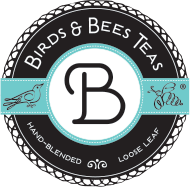A Closer Look at Honey Benefits A Closer Look at Honey Benefits
September is National Honey month! In honor of this sweet, sticky month we thought we’d take a break from the typical “herb highlight” and offer you a “honey highlight!!” Yum yum! Let’s take a closer look at honey benefits.
Honey and tea are an obvious pairing but did you know that honey has a number of benefits besides being sweet and delicious?? This amazing substance never goes bad and has been used medicinally for centuries. It’s a great addition to your cup of tea, in a salad dressing, over berries or a good replacement for white sugar. Delicious honey benefits!
There are a number of varieties of honey available such as: clover, orange blossom and manuka. The type of honey is based on the plants that the bee was pollinating while making the honey. The difference will be noticeable both in flavor and coloration of the honey. Manuka honey is often touted as one of the best types to use for medicinal purposes. It does tend to be quite a bit more expensive, however. Raw honey is always going to be more effective than pasteurized honey. Local honey can be more effective when dealing with things such as allergies.
 Herbalists use honey topically as well as internally. Honey is also a great medium for medicinal syrups such as elderberry syrup or to help tinctures or other less-than-pleasant herbal preparations go down. An herbalist or other holistic practitioner might instruct you to add honey to tea, mix it with herbs to create a syrup or even eat it by the spoonful.
Herbalists use honey topically as well as internally. Honey is also a great medium for medicinal syrups such as elderberry syrup or to help tinctures or other less-than-pleasant herbal preparations go down. An herbalist or other holistic practitioner might instruct you to add honey to tea, mix it with herbs to create a syrup or even eat it by the spoonful.
Some of the uses for honey include: burns, infection, chickenpox, cough, cuts, dry skin, parasites, allergies, energy, sleep, cold, flu, blood sugar regulation and so much more!
Obviously, honey is still very sweet and should always be used in moderation but it’s definitely an amazing powerhouse and may help with a variety of conditions. We love honey so much we even started a Pinterest board devoted to honey and honey benefits!
Here are some of our favorite ways to use honey:
Homemade Marshmallows by Mommypotamus
Or these Pumpkin Spice Marshmallows by Homestead Lady
Honey Body Wash by Wellness Mama
Or Sweet Orange and Honey Body Wash by My Mom Made That
Mommypotamus’ Burn Salve
GNOWFGLINS’ Spiced Honey Coconut Spread (this is a favorite for autumn)
Elderberry Syrup by yours truly- Birds and Bees Teas
Ginger Switchel Drink from Foodie With Family
Nourished Kitchen’s Jun Tea (this is similar to kombucha but with honey and green tea!)
What do you like to make with honey?
Honey should be avoided by infants under 1 year of age.
As always, consult with your healthcare provider before undergoing any changes to your healthcare regime. These statements are educational and not intended to be taken as medical advice. These statements have not been evaluated by the Food & Drug Administration. These products are not intended to diagnose, treat, cure or prevent any disease.
Pin this post!
The post A Closer Look at Honey Benefits appeared first on Birds & Bees Teas.
September is National Honey month! In honor of this sweet, sticky month we thought we’d take a break from the typical “herb highlight” and offer you a “honey highlight!!” Yum yum! Let’s take a closer look at honey benefits.
Honey and tea are an obvious pairing but did you know that honey has a number of benefits besides being sweet and delicious?? This amazing substance never goes bad and has been used medicinally for centuries. It’s a great addition to your cup of tea, in a salad dressing, over berries or a good replacement for white sugar. Delicious honey benefits!
There are a number of varieties of honey available such as: clover, orange blossom and manuka. The type of honey is based on the plants that the bee was pollinating while making the honey. The difference will be noticeable both in flavor and coloration of the honey. Manuka honey is often touted as one of the best types to use for medicinal purposes. It does tend to be quite a bit more expensive, however. Raw honey is always going to be more effective than pasteurized honey. Local honey can be more effective when dealing with things such as allergies.
 Herbalists use honey topically as well as internally. Honey is also a great medium for medicinal syrups such as elderberry syrup or to help tinctures or other less-than-pleasant herbal preparations go down. An herbalist or other holistic practitioner might instruct you to add honey to tea, mix it with herbs to create a syrup or even eat it by the spoonful.
Herbalists use honey topically as well as internally. Honey is also a great medium for medicinal syrups such as elderberry syrup or to help tinctures or other less-than-pleasant herbal preparations go down. An herbalist or other holistic practitioner might instruct you to add honey to tea, mix it with herbs to create a syrup or even eat it by the spoonful.
Some of the uses for honey include: burns, infection, chickenpox, cough, cuts, dry skin, parasites, allergies, energy, sleep, cold, flu, blood sugar regulation and so much more!
Obviously, honey is still very sweet and should always be used in moderation but it’s definitely an amazing powerhouse and may help with a variety of conditions. We love honey so much we even started a Pinterest board devoted to honey and honey benefits!
Here are some of our favorite ways to use honey:
Homemade Marshmallows by Mommypotamus
Or these Pumpkin Spice Marshmallows by Homestead Lady
Honey Body Wash by Wellness Mama
Or Sweet Orange and Honey Body Wash by My Mom Made That
Mommypotamus’ Burn Salve
GNOWFGLINS’ Spiced Honey Coconut Spread (this is a favorite for autumn)
Elderberry Syrup by yours truly- Birds and Bees Teas
Ginger Switchel Drink from Foodie With Family
Nourished Kitchen’s Jun Tea (this is similar to kombucha but with honey and green tea!)
What do you like to make with honey?
Honey should be avoided by infants under 1 year of age.
As always, consult with your healthcare provider before undergoing any changes to your healthcare regime. These statements are educational and not intended to be taken as medical advice. These statements have not been evaluated by the Food & Drug Administration. These products are not intended to diagnose, treat, cure or prevent any disease.
Pin this post!
The post A Closer Look at Honey Benefits appeared first on Birds & Bees Teas.









